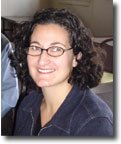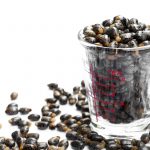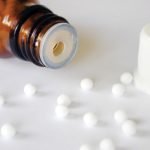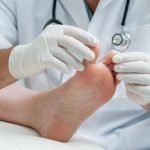Finally Scientific Proof: Homeopathic Remedies are More than Water
Dr. Wahbeh, ND
As a naturopathic physician who practices homeopathy, I always become frustrated when people argue that homeopathy cannot possibly work because there is no amount of the original substance in the remedies. I clearly saw its clinical benefits. I often thought there must be some other way the preparation of the remedies affected the water that they were prepared in.
Currently I am a post-doctoral research fellow focusing on psychoneuroimmunology and mind-body medicine. When I had the opportunity to interview leaders in the field of homeopathy and material science on pivotal research they have compiled proving that homeopathic remedies were distinctly different from a bottle of Evian, I could not resist.
I, with two other journal representatives, was present on a conference call with the authors Rustum Roy, PhD, William Tiller, PhD, and Iris Bell, MD, PhD, who recently published, “The Structure of Liquid Water: Novel insights from materials research: potential relevance to homeopathy” in Materials Research Innovations. Rustum Roy is a material scientist and researcher at Pennsylvania State University with an interest in integrative medicine data precursors and paradigm changing science. William Tiller is a professor emeritus at Stanford University and chief scientist at the William A. Tiller Foundation for New Science. William Tiller’s name might sound familiar because he was one of the scientists in the movie, “What the #$*! Do We Know!?.” Iris Bell is a physician, homeopath, and clinical researcher at the University of Arizona. She is an expert of clinical research in homeopathy and contributes much to adapting rigorous scientific methods to alternative medicine. These renowned scientists joined forces to bring forth a comprehensive review and synthesis of interdisciplinary data concerning the structure of water. The authors took turns summarizing their research paper, a thirty-eight page scientifically dense article, from their points of view. They then opened up the call to questions from the journal representatives.
The description of the key points of their research began with water. Water is everywhere. In fact, water covers approximately 70% of our earth. The human body is 65% water. We all experience water everyday through drinking, bathing, and cooking, but do we truly understand the complexity of a seemingly mundane substance. In chemistry class, we learned that a water molecule is one oxygen and two hydrogen atoms. However, this simple description of water only refers to its composition. We may also remember concepts like hydrogen bonds and van der Waals interactions. Actually, these forces play a more important role that we imagine. One molecule of water on its own will form a specific structure. When molecules join, the structure of the molecules can vary. Apparently, water molecules can form clusters in an infinite variety of unique structures that are relatively stable and distinct from one another. Because of these differences in the way water molecules cluster, not all water is created equal. Rustum Roy gave an excellent example to describe how a substance can have the same molecular composition but differ dramatically because of its structure. Diamonds and lead graphite or pencil lead have the exact same composition, carbon. We all know that they are incredibly different substances, diamonds being the hardest substance in the world and lead graphite one of the softest. The way the carbon molecules align creates the difference between the diamond and the pencil lead. Roy emphasized that structure is the key parameter to describe any matter if you want to know about its properties. Thus, the importance of the structure of the water molecules rather than the composition becomes essential in understanding the properties of the water.
When opponents say there is nothing in homeopathic remedies, they are right; there are no molecules from the original remedy. However, the homeopathic preparation of a remedy changes the structure of the water and thus creates a different substance than what you would find in an Evian bottle. Structure is what creates the difference in properties of a substance rather than the composition as we see in the diamond. Three mechanisms, epitaxy, pressure, and nanobubbles create the change in the structure of water through homeopathic preparation. Epitaxy is defined as the transmission of structural information from the surface of one material (usually a solid) to another (usually a liquid). Therefore, homeopaths place the material in the water and alcohol to make the mother tincture and change the structure of water. Preparers repeat this process with each dilution. In addition, the succussion process generates substantial amounts of pressure (10,000ATM) and nanobubbles, which alter the structure of the water. William Tiller describes this process according to mathematics and thermodynamics. He says that two things affect the thermodynamic equation within a material: the concentration and the thermodynamic activity coefficient. It is true that in homeopathic remedies the concentration of the material is zero, however, because of epitaxy, pressure and nanobubbles the thermodynamic activity coefficient changes. Therefore, even though a homeopathic remedy may have the same composition as water, it does not have the same structure.
Western science’s greatest argument against homeopathy hinges on the idea that there are no molecules of the original material in homeopathic remedies due to ultra-dilution. How can homeopathic remedies affect change if there is nothing in them? Homeopaths have struggled with this argument because they cannot prove the scientists wrong and yet clearly observe clinical changes in their patients from using them. Rustum Roy says that, “It is now obscene to make this argument as it has been proven that although the composition of the water is the same, the structure is different. The preparation of a remedy does change the structure of water. The attack on homeopathy based on composition is therefore nullified once and for all . . . It is simply wrong, it is bad science, elementary science, high school science.” Thus, the study of water structure definitively proves that homeopathic remedies are distinct from water.
What a relief! We no longer have to argue with people who say that homeopathy is a ridiculous medical practice because there is nothing in the water. Just give them this article (Roy, R., Tiller, W., Bell, I. (2005) The Structure of Liquid Water: Novel insights from materials research: potential relevance to homeopathy. Mat Res Innov. 9-4:93-124), and it will quiet your opponents quickly. You can also describe these findings in handouts to explain homeopathic remedies to patients and squelch the skeptical minds.
Iris Bell also related the research to clinicians. She described an experiment conducted in Italy where researchers recorded the thermodynamic heat generated from homeopathic remedies. When they left the remedy on the shelf and re-tested 6 months later, the heat generated had actually increased. Dr. Bell exclaims that this effect may mirror what clinicians observe in practice when the response to a remedy grows over time. Bell also reminds us that homeopathic remedies are not drugs and cannot be explained or examined through substrate-receptor models. Bell also expresses that homeopathy often receives criticism when examined through the randomized controlled trial lens with narrow, specific outcome measures. Homeopathic response is often generalized rather than specific and exponential over time. It is essential in our practice and through research that we remind others of this and design our experiments accordingly.
William Tiller contributed to the conversation by describing his relevant groundbreaking research exploring the structure of water and intention. Dr. Tiller’s work describes how the structure of water is altered not only by the preparation of homeopathic remedies, but also by our intentions when making, handling and prescribing them. He describes his well-designed studies where four experienced mediators placed a specific intention (to raise or lower the pH of water by one point) into an electromagnetic device. Turning the device on near the experimental water increased or decreased not only in their laboratory but also in a partner laboratory 6,000 miles away. Tiller’s experiments further support the concept that the composition of matter is not the most important factor. We can alter the structure of water and change its properties with homeopathic preparation and with our mental intentions. The implications of these concepts are far reaching and are only now beginning to be explored.
The research described by Roy, Bell and Tiller, stimulates a myriad of questions. Some of the questions that ensued from the interviewers included: We are 65 percent water. How do we experience the structural changes within the water in our bodies? Also, what about our water supply? If lead, mercury and other substances are materially filtered out, does their interaction with the water still change the structure in a way that affects our health? Is it possible that these concepts can be applied to the pharmaceutical industry to create less toxic pharmaceutical agents? How does what we ingest affect the structure of water in our bodies? What about our own intentions or those of people around us? The authors did not have definitive answers to these questions because the science is complex and just beginning to be studied. They did remark that these are the right questions to be asking and will provide hypotheses for further experiments.
I think the most important question asked was “how do we bring this complex scientific information into the public arena in an understandable way?” This article is just one step to bring greater awareness to the naturopathic medical community about an exciting discovery. Maybe the understanding of these concepts will ripple out from naturopathic physicians to their patients. As other scientists read the article, hopefully they will replicate the studies and take them further. Maybe the NIH will grant further funding to explore these exciting questions. Regardless, the work conducted by these scientists has laid the theoretic foundation for further study on this topic. Rustum Roy states, “The amazing potential of what we could do with water is so huge for humankind, not only in health, but also in agriculture, [and] in so many other fields. So, we will just get to the job of finding out.”
At least we can say that the feud is over. Finally, the key argument against homeopathy over the last 200 years has been definitively resolved. The new insights these authors have synthesized from interdisciplinary fields have revealed an undeniable distinction between homeopathic remedies and water. This exciting research may change the way we view homeopathy, medicine, and health and healing forever.
 Dr. Wahbeh is a post-doctoral research fellow at the Helfgott Research Institute. Her research interests are in psychoneuroimmunology and energetic medicine. She is currently working on- EEG, psychological, and physiological effects of binaural beat technology; the naturopathic Anti-Inflammatory diet’s effect on mood; Mindfulness Based Cognitive Therapy for veterans with PTSD; and validation studies for neurotransmitter assessment through urine. Dr. Wahbeh’s background is in public health and Alzheimer’s disease research. She graduated from the National College of Naturopathic Medicine.
Dr. Wahbeh is a post-doctoral research fellow at the Helfgott Research Institute. Her research interests are in psychoneuroimmunology and energetic medicine. She is currently working on- EEG, psychological, and physiological effects of binaural beat technology; the naturopathic Anti-Inflammatory diet’s effect on mood; Mindfulness Based Cognitive Therapy for veterans with PTSD; and validation studies for neurotransmitter assessment through urine. Dr. Wahbeh’s background is in public health and Alzheimer’s disease research. She graduated from the National College of Naturopathic Medicine.










